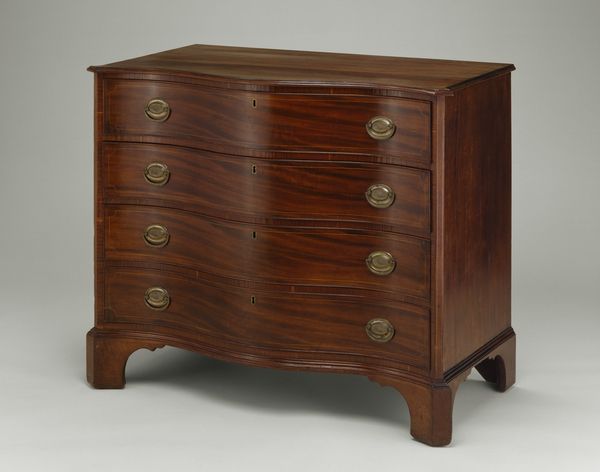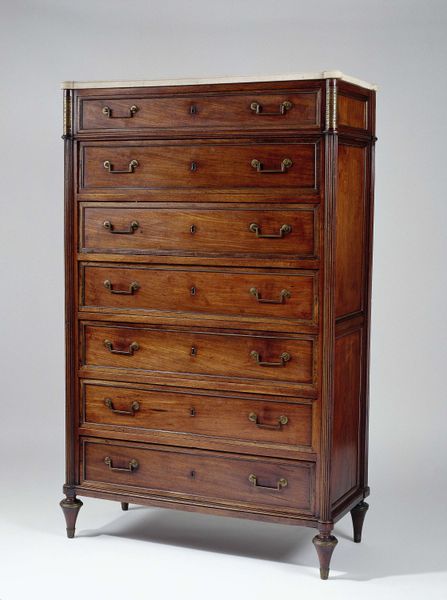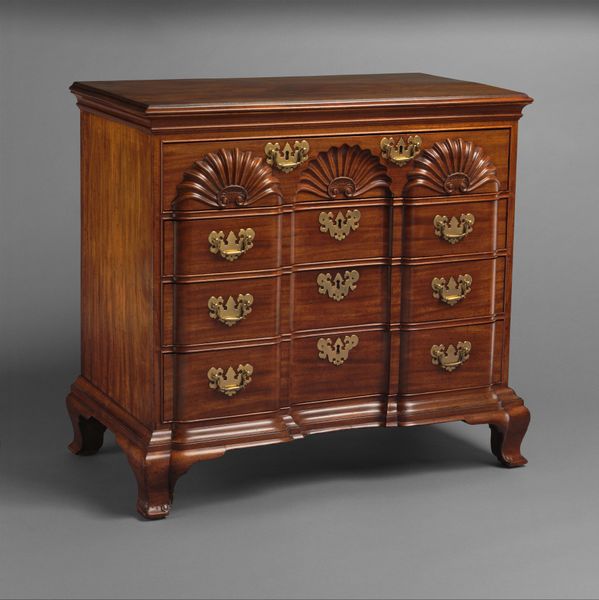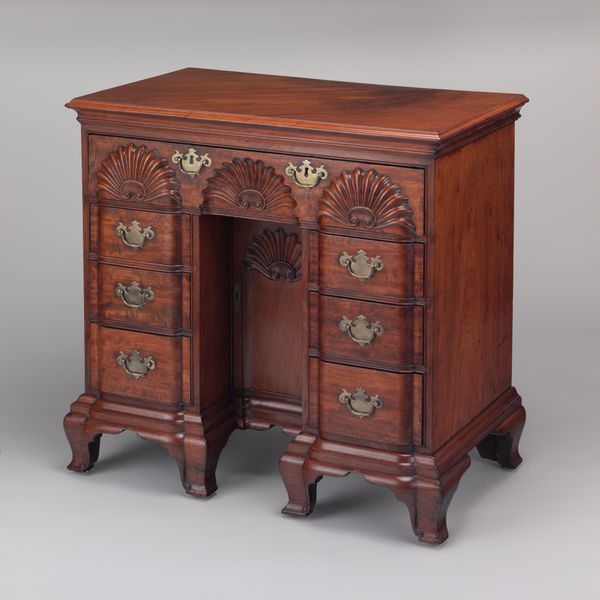
carving, wood
#
wood texture
#
carving
#
asian-art
#
furniture
#
form
#
wooden texture
#
wood
#
decorative-art
Copyright: Public Domain
Curator: I find this late 19th-century "Book Storage Chest" fascinating in its silent assertion. The maker is currently unknown, adding a layer of mystery to its construction and origins. What strikes you first about it? Editor: It’s heavy, isn’t it? I feel a sense of weighty tradition, both in its literal form, its wood and construction, and also as a container for written knowledge. Almost tomb-like. Curator: The rectilinear construction emphasizes functionality; it seems to argue for an unadorned approach to spatial organization. Notice the repeated vertical and horizontal elements: pure geometry. Editor: But within those rigorous lines, I see all sorts of suggestive imagery. For example, the circular pulls, like tiny suns punctuating an otherwise severe landscape. Curator: Perhaps you read the sun there due to cultural association of a disc as an archetype for celestial bodies. But might it simply be a functional, circular element? Editor: Maybe, but consider where this piece comes from. If it is from Asia, those discs could certainly allude to larger cosmological systems. Containing books in a structured manner within suggests containing knowledge itself, a microcosmos within a macrocosmos. Curator: That is one theoretical interpretation. But I would push that the power of the piece lies within the grain of the wood itself; how it plays with light, adding visual depth without representational intention. Look at how light and shadow work to create subtle yet shifting abstract patterns. Editor: I’m interested in how we continue to interact with pieces such as these, still imbueing them with meaning far beyond their original intention. A conversation between utility and something more ineffable. Curator: Indeed. It's in pieces like this that we can observe, as close as we are, the ongoing dialogue between form and context, allowing us ever more nuanced views of the spaces we create and inhabit.
Comments
No comments
Be the first to comment and join the conversation on the ultimate creative platform.













